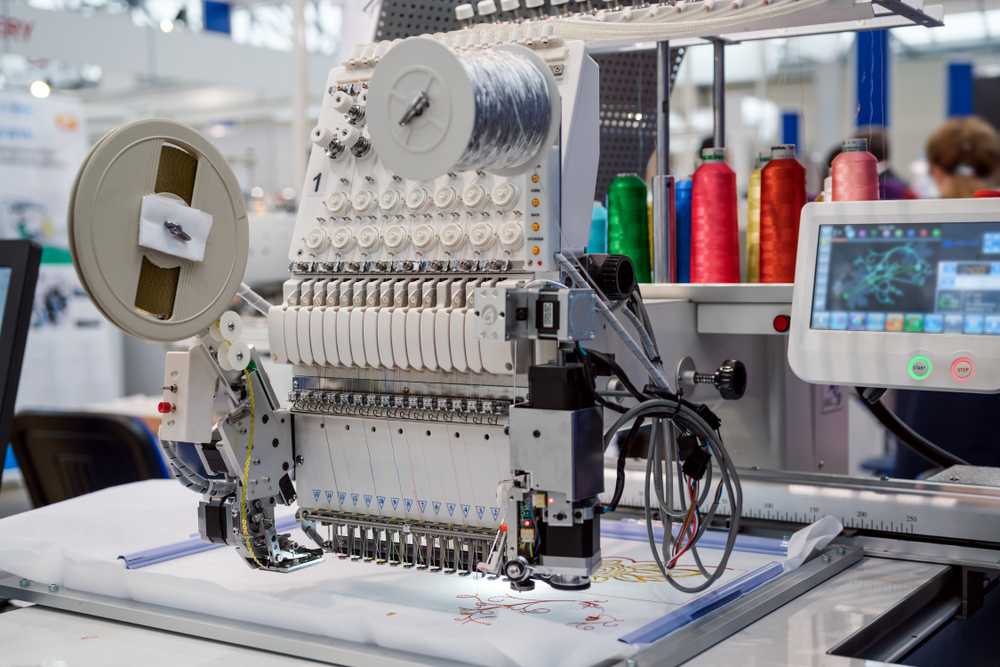Understanding the Needlework Digitizing Process: Your Ultimate Guide
Embroidery digitizing is a precise craft that calls for accuracy and expertise to equate intricate styles into digital formats for equipment embroidery. As craftsmens start this journey to grasp the needlework digitizing process, a comprehensive understanding of the fundamentals establishes the foundation for quality. Beyond the primary knowledge lies a world of sophisticated software program, specialized devices, and nuanced strategies waiting to be discovered. By diving right into the nuances of digitizing, one can open a world of imaginative possibilities and elevate their embroidery projects to brand-new elevations.

Recognizing Needlework Digitizing Essentials
Needlework digitizing fundamentals form the foundation whereupon complex layouts are converted right into machine-readable formats for specific stitching. This preliminary step in the needlework digitizing procedure is essential for guaranteeing that the last embroidered item is a loyal representation of the initial layout. Recognizing needlework digitizing essentials includes grasping essential ideas such as stitch kinds, sew instructions, thickness, rug, and pull payment.
Sew types play a crucial role in establishing the visual and textural result of the embroidered style. By choosing the appropriate stitch type, whether it be satin, fill, or running stitch, digitizers can attain the preferred effect and boost the total top quality of the embroidery. Furthermore, stitch direction influences the flow and measurement of the layout, while density determines the spacing and protection of the stitches.
In addition, padding sewing supplies stability to the layout by securing the material and stopping distortion throughout the embroidery procedure. Pull settlement is one more essential factor to consider to counteract the natural propensity of fabric to contract when sewn. Understanding these needlework digitizing fundamentals is essential for creating professional-quality stitched products.
Choosing the Right Digitizing Software Application
Choosing the appropriate digitizing software program is an essential choice that substantially affects the efficiency and top quality of the embroidery digitizing process. Digitizing for Embroidery. When choosing the right digitizing software application, it is necessary to think about aspects such as the intricacy of styles you prepare to develop, the user-friendliness of the software application, the level of client assistance provided, and the compatibility with your needlework equipment
There are numerous digitizing software application choices available in the market, ranging from fundamental programs for novices to sophisticated software application for professional digitizers. Some preferred options include Wilcom EmbroideryStudio, Hatch Needlework Software Application, and PulseID. These software use a wide variety of devices and features to help you develop complex designs easily.
Before making a decision, it is advisable to explore the different software alternatives through totally free trials or trials to figure out which one best matches your demands. In addition, reviewing reviews and looking for referrals from skilled digitizers can supply useful understandings into the toughness and weak points of each software (Digitizing for Embroidery). By very carefully assessing your demands and contrasting the functions of different digitizing software, you can make an educated selection that boosts your needlework digitizing workflow
Digitizing Devices and Techniques

Optimizing Style Setup for Needlework
Grasping the details of design get redirected here setups is essential in achieving optimal lead to the embroidery digitizing procedure, structure upon the foundation laid by understanding digitizing tools and methods. When maximizing design setups for needlework, it is necessary to consider aspects such as stitch kind, density, padding, draw settlement, and registration. Stitch type option impacts the overall feel and look of the layout, with options like satin, fill, and running stitches providing different structures and results. Density describes the spacing and thickness of stitches, impacting the style's protection and durability. Proper padding stitching provides security and stops fabric distortion, specifically for intricate layouts or on stretchy products. Pull settlement readjusts for fabric stretch during sewing, guaranteeing precise style replication. Enrollment setups straighten different components of the go right here design precisely, keeping overall style honesty. By fine-tuning these layout setups, embroiderers can boost the high quality and precision of their embroidered developments.

Troubleshooting Common Digitizing Issues
When running into typical digitizing concerns during the needlework process, it is essential to comprehend the source and carry out reliable remedies without delay. One typical problem is stitch thickness concerns, where stitches may be as well thick, causing the textile to pucker, or as well sporadic, resulting in spaces in the style. Readjusting the stitch density settings in the digitizing software can aid settle this concern.
One more constant challenge is string breaks during the embroidery process. This can happen because of different factors such as incorrect tension setups, boring needles, or making use of low-grade thread. Ensuring proper upkeep of the needlework maker, including normal needle modifications and stress changes, can lessen the incident of thread breaks.
Furthermore, layout enrollment errors can cause misaligned aspects within the needlework style. Checking the design alignment in the digitizing software program and making necessary adjustments prior to sewing can assist in avoiding this issue. By attending to these common digitizing problems quickly and effectively, you can make sure a smoother embroidery procedure and top notch completed items.
Final Thought
To conclude, mastering the needlework pop over to this site digitizing procedure requires a solid understanding of the essentials, the right choice of software application, and expertise of devices and methods. Maximizing style setups and fixing usual digitizing issues are critical actions in making sure high-grade embroidery outcomes. By complying with these steps faithfully, one can accomplish accuracy and performance in the digitizing process.
Comments on “Reliable Digitizing for Embroidery: Quick Turnaround”